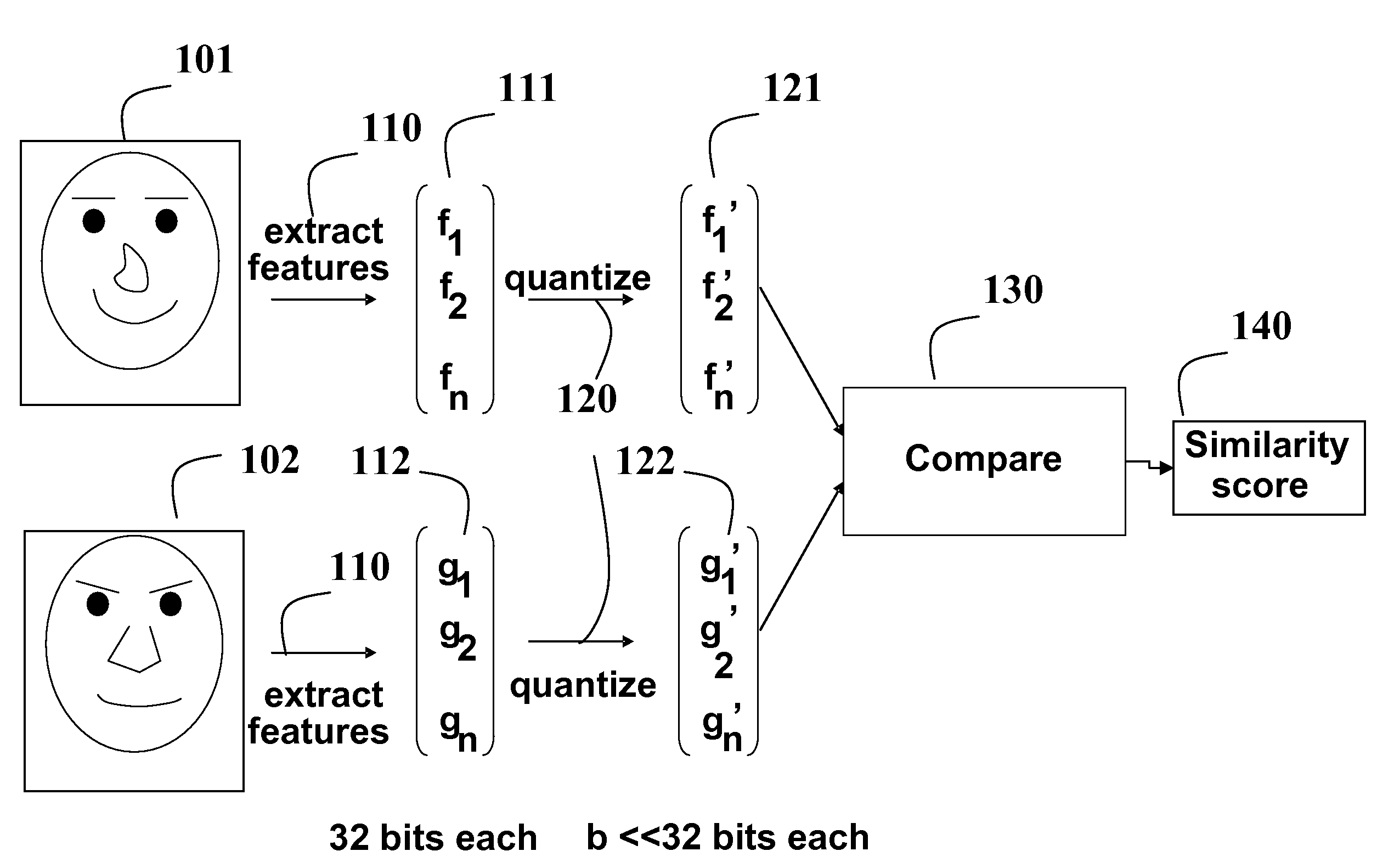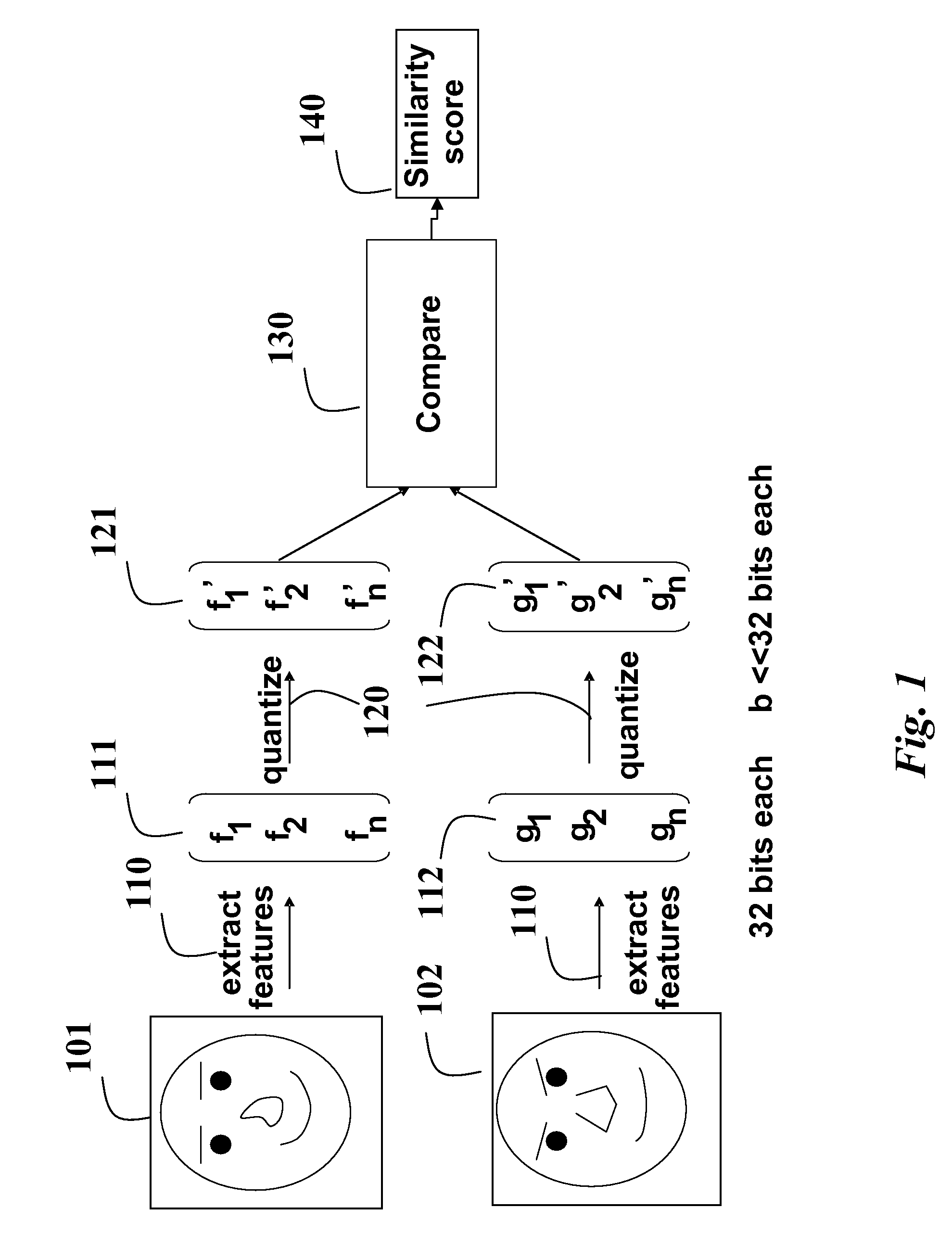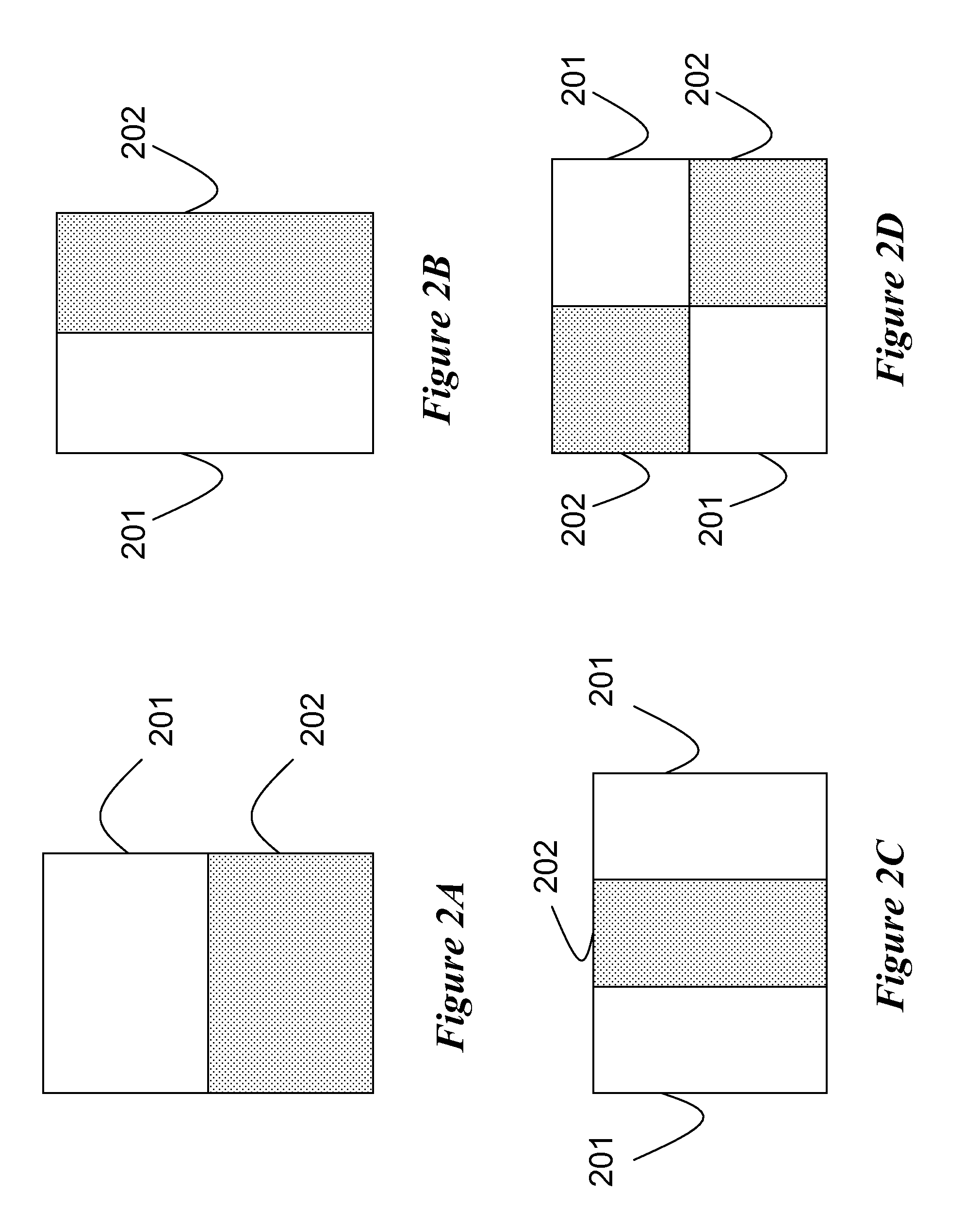Method for Identifying Faces in Images with Improved Accuracy Using Compressed Feature Vectors
a feature vector and image technology, applied in the field of pattern recognition, can solve the problems of reducing accuracy, face identification presents an extremely difficult challenge for computer vision technology, and feature vectors consume memory and require a considerable amount of processing resources
- Summary
- Abstract
- Description
- Claims
- Application Information
AI Technical Summary
Problems solved by technology
Method used
Image
Examples
Embodiment Construction
[0013]FIG. 1 shows a method according to an embodiment of our invention for comparing two face images. A feature vector 111 is extracted 110 from an image 101 acquired of an unknown face. A different feature vector 112 is also extracted from an image 102 of another faces. The feature vectors 111-112 are quantized to compressed feature vectors 121-122, respectively. The compressed feature vectors are compared 130 to determine a similarity score 140. The similarity score indicates if the faces in the two images 101-102 the same or not.
[0014]Pre-Processing: Face Detection
[0015]The invention is not concerned with how the images of the faces are acquired. Conventional face detection can be used. As used herein, and not to be confused, detection pertains to what is in an image, i.e., are there any faces in the image or not? Identification pertains to who is in the image, i.e., what is the identity of a face in the image?
[0016]Pre-Processing: Normalization
[0017]As an option, the faces in p...
PUM
 Login to View More
Login to View More Abstract
Description
Claims
Application Information
 Login to View More
Login to View More - R&D
- Intellectual Property
- Life Sciences
- Materials
- Tech Scout
- Unparalleled Data Quality
- Higher Quality Content
- 60% Fewer Hallucinations
Browse by: Latest US Patents, China's latest patents, Technical Efficacy Thesaurus, Application Domain, Technology Topic, Popular Technical Reports.
© 2025 PatSnap. All rights reserved.Legal|Privacy policy|Modern Slavery Act Transparency Statement|Sitemap|About US| Contact US: help@patsnap.com



